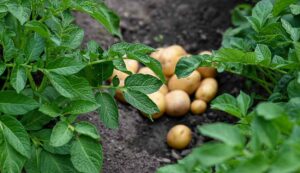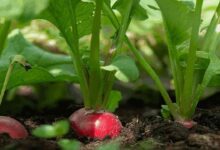Potato Farming Tips: Follow these 5 tips in potato cultivation, and the crop will remain disease-free
Potato Farming Tips: In India, one of the primary Rabi crops is the potato. It is grown mostly in frigid climates. Although many farmers plant early varieties in October, there are a few key considerations for improved crop yield. Farmers must use extreme caution, particularly in the early stages of potato production, when the crop is expanding quickly.

What are the five things to keep in mind while Growing Potatoes?
1. Management of Soil and Fertilizer
The potato crop needs minerals, including potash, phosphate, and nitrogen.
- Nitrogen: It aids in the development of green plant stems and leaves. The plants’ leaves remain healthy and green when the proper quantity of nitrogen is applied.
- Phosphorus: It fortifies the plants’ roots. The application of phosphorus increases the growth of the tubers by strengthening and deepening the roots.
- Potash: It contributes to improving tuber output and quality.
In addition, organic fertilizers are important. Organic fertilizers such as vermicompost, cow dung manure, and others aid in improving soil fertility and crop nutrition. When organic fertilizer is applied at the proper time and amount, the crop becomes naturally robust.
2. Disease and Pest Management
It is common for pests and pathogens to target the potato crop. However, the crop may be salvaged if they are managed promptly.
- Important diseases: The potato crop is susceptible to blight, bacterial wilt, brown rot, and papdi disease.
- Spray and medications: Combine 15 milliliters of quinolphos with one liter of water, then spray to suppress pests. Mix 1 milliliter of tebuconazole medication with 1 liter of water and spray to prevent blight and other diseases. In addition, spraying zinc-based medications helps treat zinc insufficiency.
3. The Value of Irrigation
- For the potato crop to grow, the proper quantity of water is required.
- The formation of potato tubers depends on the soil being wet.
- The tubers begin to take form 30 to 45 days after seeding, so cut down on watering during this period. The tubers may decay if you give them too much water.
- Drip irrigation is a useful strategy for keeping things wet and avoiding water waste.
4. The First 30 to 45 days are Crucial
The most critical period for potato crop growth is the first 30 to 45 days. The plants’ stems, leaves, and roots all develop quickly at this period. In such circumstances, the crop needs sufficient water and nutrients, which fortify the crop’s base. It is crucial to monitor illnesses and pests during this period in order to address the issue before it worsens.
5. Advice for increased output
- When planting, choose seeds that are disease-free and healthy.
- Once the soil has been examined, choose fertilizers.
- Strike the right balance between fertilizer and irrigation.
- Apply a proportionate quantity of chemical and organic fertilizers.
- Timely spraying helps keep pests and pathogens at bay.

